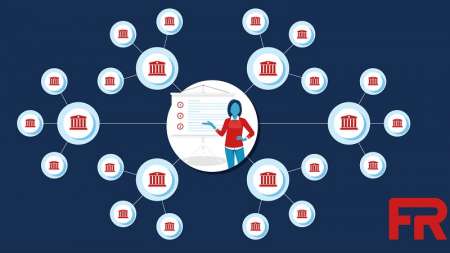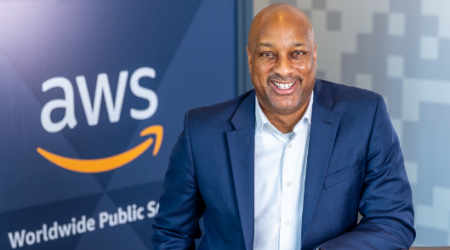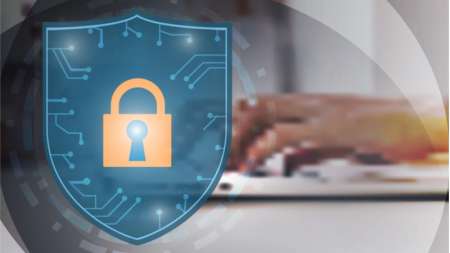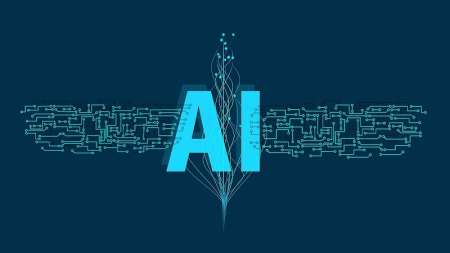By Steve Caimi, Senior Principal, Product Marketing, U.S. Public Sector, Okta As the digital revolution proceeds, public sector organizations know that delivering great digital experience is vital to building loyalty and convincing citizens that they can safely and seamlessly access government services online. Yet a new report shows that rising customer expectations are posing challenges […]
By Jeffrey Huth, Senior Vice President of TransUnion’s Public Sector business Three senators last month introduced bipartisan legislation intended to create a better customer experience for people trying to access government services. Specifically, the Improving Government Services Act will require agencies to develop plans within a year of enactment to reduce wait times and improve digital services. […]
By Jeff Stewart, Vice President, Product, SolarWinds The exponential growth of digital government has led to unprecedented security breaches across the supply chain. To address these threats, in 2021 the Biden administration enacted Executive Order 14028 intensifying scrutiny over vendors’ software supply chain. Subsequently, in 2023 the National Cybersecurity Strategy was introduced, urging software vendors […]
By Travis Howerton, Co-Founder and Chief Technology Officer at RegScale Until recently, FedRAMP (Federal Risk and Authorization Management Program) certification was an Executive Branch mandate, but now that it has become law, it legally stands between cloud service providers (CSPs) and government revenue. Further impacting the landscape is FedRAMP’s approval earlier this year of Rev. […]
By Patrick Tiquet, VP of Security and Architecture, Keeper Security Over the past few years, an important cybersecurity initiative has quickly swept across U.S. federal government agencies. Like few other tech initiatives, zero trust has taken hold at warp speed, thanks to a cooperative push from various cybersecurity authorities and frameworks. The White House Executive Order 14028, […]
By Chip Daniels, Vice President, Government Affairs, SolarWinds When the Biden administration asked Congress to approve $300 million of additional money for the Technology Modernization Fund (TMF) in fiscal year 2023 (FY2023), hopes were high that agencies would finally have the financial backing necessary to truly accelerate digital transformation. Yet, when Congress passed its $1.7 […]
By Jim Richberg, Fortinet Public Sector Field CISO With an estimated 3.4 million people needed to fill the global cybersecurity workforce gap, it’s time for organizations to start turning to new ways to recruit and keep talented cyber professionals. The federal situation mirrors what’s happening globally, but the stakes are even higher with civilian, defense and IC […]
By Steve Caimi, Director of Product Marketing, Public Sector, Okta In an ever-evolving digital landscape, the public sector is faced with a difficult challenge: ensuring that public services are safe, secure, and easy to use. Meeting all of these demands is critical to providing users with the digital experiences they require. To help your public […]
By Gary Hix, Chief Technology Officer for Hitachi Vantara Federal In a determined effort to prioritize sustainability and combat climate change, Federal agencies have made significant progress since President Biden issued an executive order on Federal sustainability over a year ago. Guided by the government’s influential scale and procurement power, this order sets ambitious goals […]
In recent years, Federal Agencies have been challenged by a growing list of adversaries operating in an increasingly complex cyber threat landscape. At the same time, Agencies have been diligently modernizing their information technology (IT) environments to accommodate evolutionary cloud technology trends and a more mobile and remote workforce. These dynamics have combined to create […]
By Eric Adams, Geospatial Functional Lead, GDIT As climate change has been accepted as a scientifically undeniable and universally recognized challenge, geospatial intelligence teams are applying the tools of their trade to mitigate its effects and address its impacts on aspects of our environment. Today, like nearly every other industry around the world, artificial intelligence and […]
By Jim Richberg, Fortinet Public Sector Field CISO The era of the global internet is over. The new reality is a fragmented digital landscape where nation states have largely been left to their own devices to create patchworks of policies to defend against threat actors who have become faster, stronger and more ruthless. To combat […]
By Gaurav Pal, Principal and Founder, stackArmor, Inc. Disruptions in gasoline supplies due to the cyberattack on the Colonial Pipeline in May 2021 transformed cybersecurity attacks from an “online problem” to a national security concern. This seminal event resulted in the release of the National Cybersecurity Strategy (NCS) on March 2, 2023. The NCS brought […]
By Ozan Unlu, CEO, Edge Delta In fall 2022, Splunk issued its annual State of Observability Survey and Report, highlighting the increasingly critical role observability plays in enabling multi-cloud visibility and dramatically improving end-user experiences. Growth in observability – or the ability to measure a system’s current state based on the data it generates – […]
By Melissa Trace, Vice President, Global Government Solutions at Forescout Technologies Research from Forescout’s Vedere Labs reveals that government organizations have the highest percentage of devices with risk. Between the explosion of remote work, the ongoing ransomware epidemic and the fact that the number of non-traditional assets – such as IoT, OT and IoMT – […]
By Miles Fuller, Head of Government Solutions, TaxBit The collapse late last year of FTX, one of the largest centralized cryptocurrency exchanges in the world, and the resulting contagion has garnered the interest of U.S. lawmakers and regulators. After years of talking about crypto, they now seem to be interested in more than just hinting […]
By Dave Levy, Vice President, Amazon Web Services The FedRAMP Authorization Act was recently signed into law as part of the defense authorization bill, a signal that cloud technologies continue to have a permanent place in helping U.S. government agencies deploy secure and innovative solutions to accomplish their missions. Through this legislation, policy leaders on […]
Despite recent progress, IT-related problems continue to hinder work at government agencies. These include data in silos across locations that complicate information-gathering and decision-making, rising cyber threats targeting employee logins, and legacy systems that don’t adapt easily to mission changes or remote work environments. Accordingly, a recent study by Gartner found that while 72 percent […]
By Petko Stoyanov, Global Chief Technology Officer, Forcepoint Many Federal agencies are considering investing in zero trust network access (ZTNA) solutions. But not all ZTNA applications are equal, and it’s important agencies invest in ZTNA solutions that will allow them to align and meet the “Optimal” stage outlined in the Cybersecurity and Infrastructure Security Agency’s […]
By Willie Hicks, Federal Chief Technologist at Dynatrace Whether users are shopping on Amazon or another top company’s website, they expect certain website performance and features availability to ensure a positive customer experience (CX). Users expect to access product links and conduct transactions seamlessly and swiftly. They expect to navigate to comprehensive product specifications or […]
By Michael Zurat, Senior Solutions Architect, General Dynamics Information Technology (GDIT) 5G technology has the potential to be transformative for businesses and consumers, as well as for the U.S. government. 5G can provide the enabling connectivity to drive digital transformation from a paperless digital Internal Revenue Service, to enabling the Postal Service to outperform Amazon, […]
By: Bob Venero, President & CEO, Future Tech Enterprise, Inc., Ftei.com Manufacturing is all about operational efficiency – make it quicker, cheaper, and ship it for less. For this reason, the industry has long been at the forefront of the application of new technologies, finding creative solutions to increase production and decrease costs. Basically, how […]
By Dr. Jim Matney, Vice President and General Manager, DISA and Enterprise Services, at General Dynamics Information Technology (GDIT) As almost any cybersecurity professional would tell you, you can’t reliably know what vulnerability a hacker will find and exploit. To avoid an attack, your defenses must be right 100 percent of the time. The hacker […]
The Accenture Federal Technology Vision highlights four technology trends that will have significant impact on how government operates in the near future. Today we look at Trend #4, Computing the Impossible: New Machines, New Possibilities. When Intel launched the Intel® 4004 processor in 1971, the first general-purpose programmable processor was the size of a small fingernail and held […]
The Accenture Federal Technology Vision 2022 highlights four technology trends that will have significant impact on how government operates in the near future. Today we look at Trend #3, The Unreal: Making Synthetic Authentic. Artificial intelligence (AI) is one of the most strategic technologies impacting all parts of government. From protecting our nation to serving its citizens, AI […]
By Bob Eckel, CEO, Aware Confirming the identification of the world’s most wanted man leaves no margin for error. In fact, when Osama bin Laden was killed in 2011, he was identified through facial recognition which was later confirmed by DNA analysis. Few would argue this was not a commendable use of biometrics. Since then, […]
By Melissa Trace, VP, Global Government Solutions at Forescout As we approach the upcoming midterm elections, U.S. officials are on high alert for bad actors looking to target election networks and devices. Both state and non-state threat actors view our nation’s democratic processes as threats against their beliefs and see disrupting our upcoming election as […]
The Accenture Federal Technology Vision highlights four technology trends that will have significant impact on how government operates in the near future. Today we look at Trend #2, Programmable World: Our Planet, Personalized. What is a “programmable world?” Consider what’s going on at Tyndall Air Force Base, near Panama City, Fla. In line with the base’s ambition to […]
By: Terry Halvorsen, general manager, U.S. Federal Market, IBM The pandemic accelerated digital transformation, amplifying both opportunities and risks. Remote workers, new devices, partners, and integrations open organizations in ways that can radically increase their threat surface, making it less of a question of if a cyber attack will happen, but rather when. Therefore, the […]
By: Santiago Milian, Principal, Booz Allen; and Jenna Petersen, senior lead technologist, Booz Allen From housing assistance to community health to closing the digital divide, equity is on the agenda of multiple Federal agencies. But making Federal services more equitable demands a close look at how constituents experience them. Do services address the full breadth […]
Archives
- March 2024 (1)
- December 2023 (2)
- September 2023 (2)
- August 2023 (2)
- June 2023 (2)
- May 2023 (2)
- April 2023 (1)
- March 2023 (2)
- February 2023 (2)
- January 2023 (1)
- December 2022 (2)
- November 2022 (2)
- October 2022 (6)
- September 2022 (7)
- August 2022 (1)
- June 2022 (3)
- April 2022 (2)
- March 2022 (6)
- February 2022 (3)
- January 2022 (1)
- December 2021 (3)
- November 2021 (5)
- October 2021 (2)
- September 2021 (2)
- August 2021 (7)
- July 2021 (2)
- June 2021 (3)
- May 2021 (3)
- April 2021 (4)
- March 2021 (1)
- February 2021 (1)
- December 2020 (1)
- November 2020 (1)
- October 2020 (5)
- September 2020 (1)
- July 2020 (3)
- June 2020 (3)
- May 2020 (2)
- April 2020 (1)
- March 2020 (1)
- February 2020 (2)
- January 2020 (3)
- November 2019 (1)
- October 2019 (1)
- July 2019 (2)
- April 2019 (1)
- February 2018 (1)
- December 2017 (1)
- November 2017 (2)
- October 2017 (1)
- September 2017 (5)
- July 2017 (1)
- June 2017 (2)
- March 2017 (2)
- November 2016 (1)
- October 2016 (5)
- September 2016 (3)
- August 2016 (1)
- July 2016 (2)
- June 2016 (1)
- May 2016 (1)
- April 2016 (2)
- March 2016 (3)
- January 2016 (1)
- December 2015 (1)
- November 2015 (1)
- September 2015 (2)
- August 2015 (2)
- July 2015 (3)
- May 2014 (1)
- November 2013 (1)
- August 2013 (1)

























